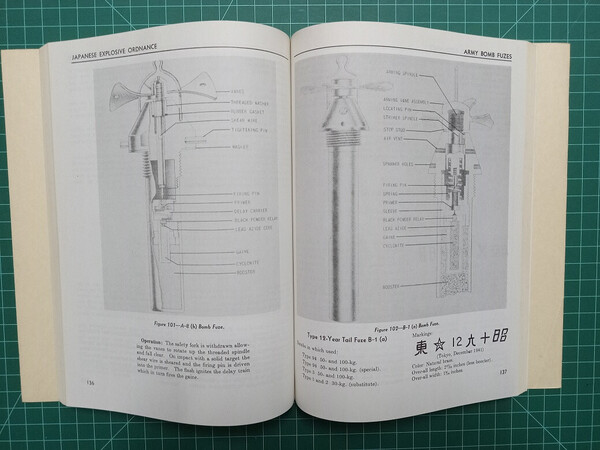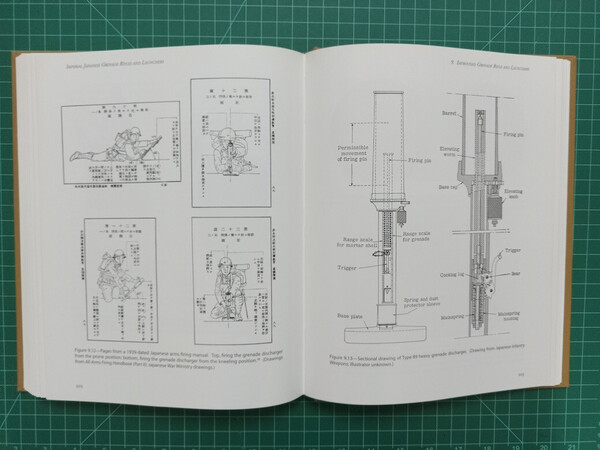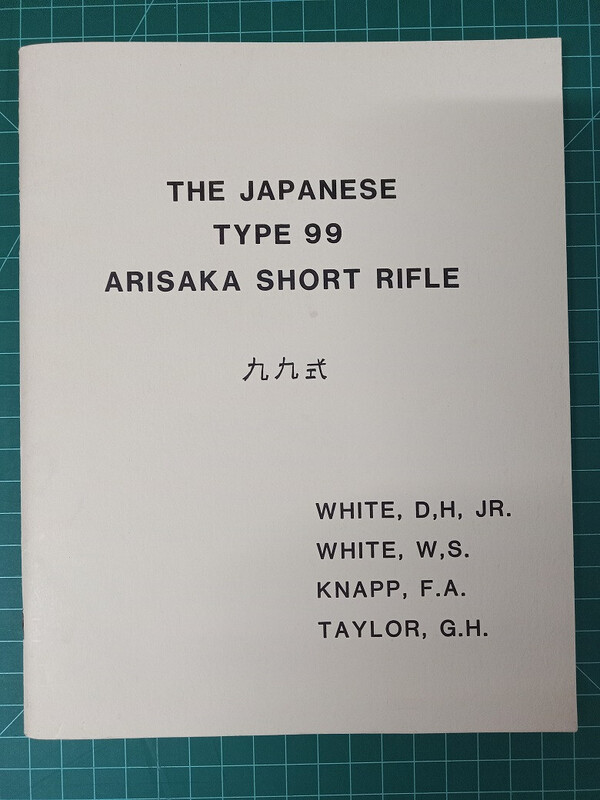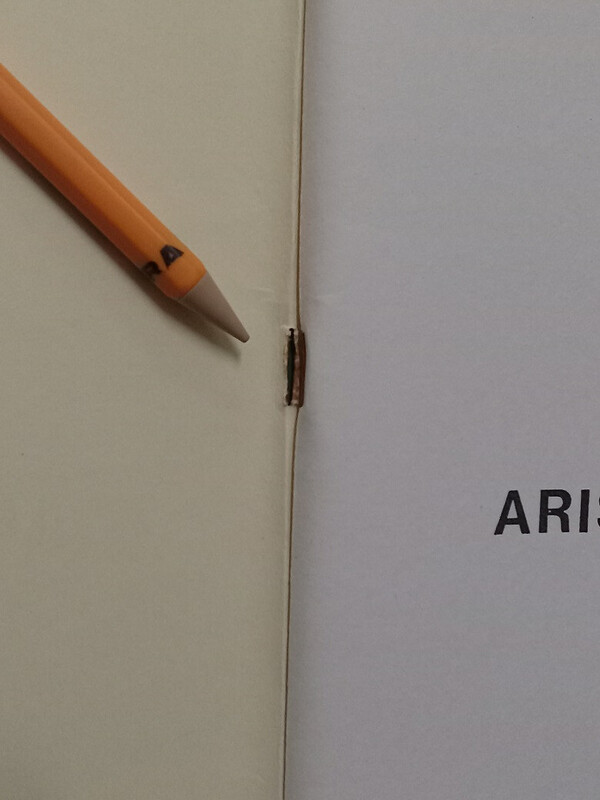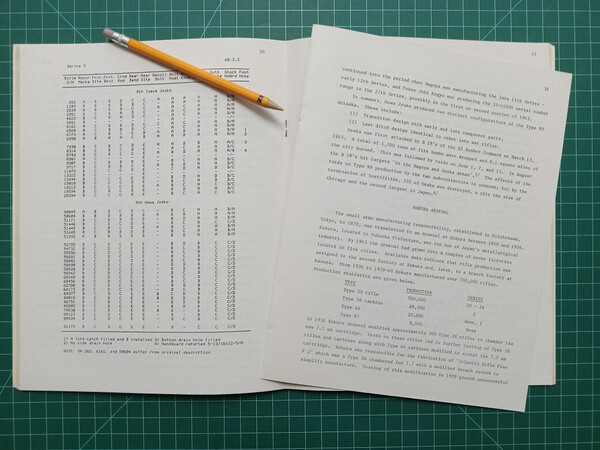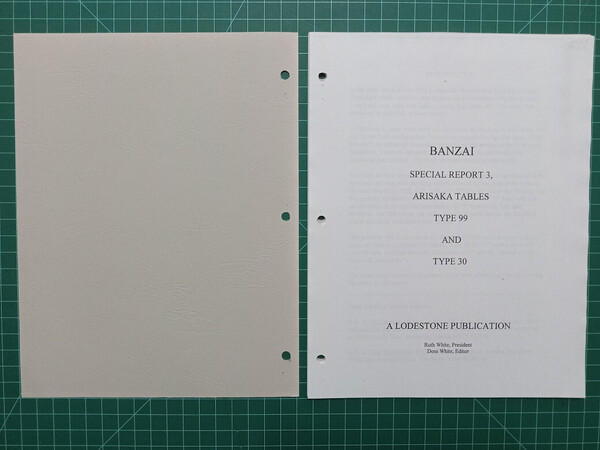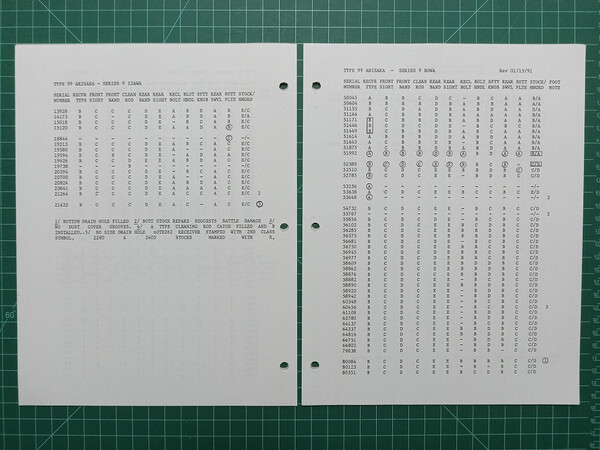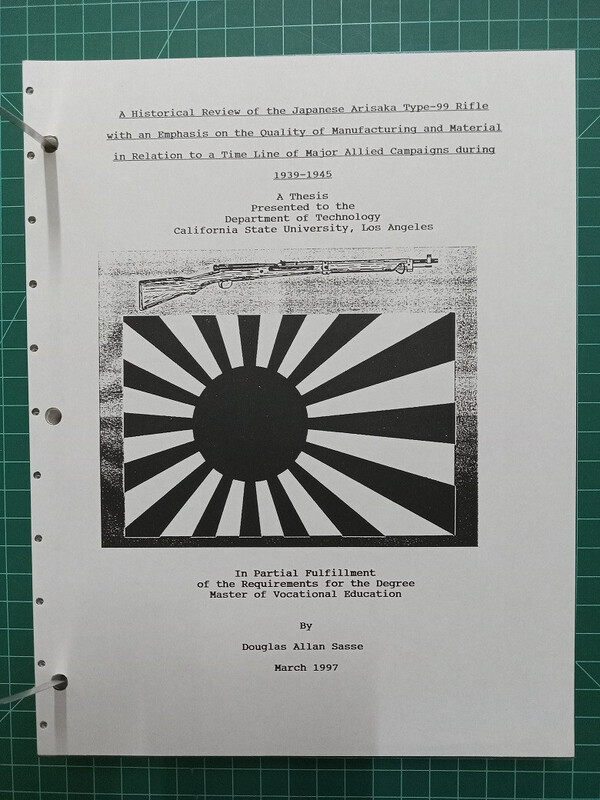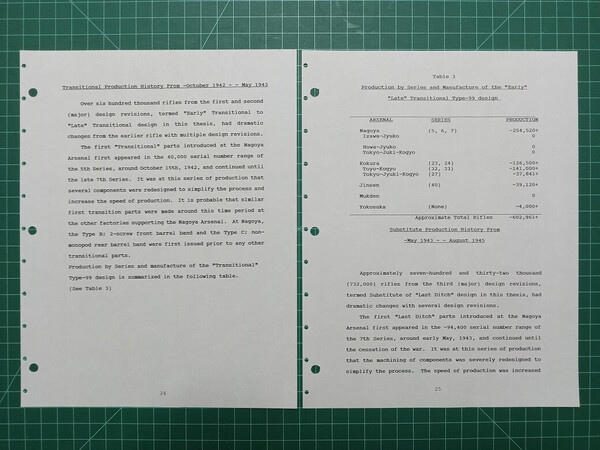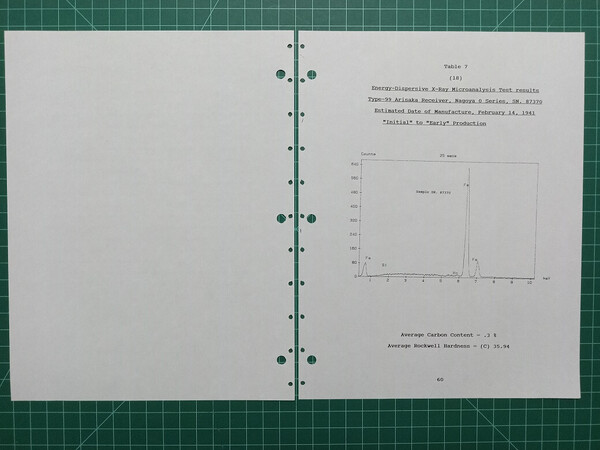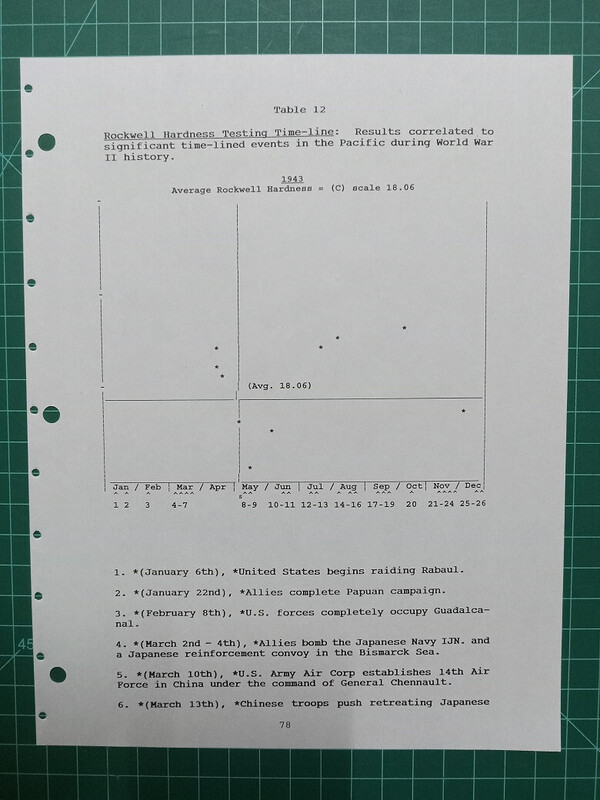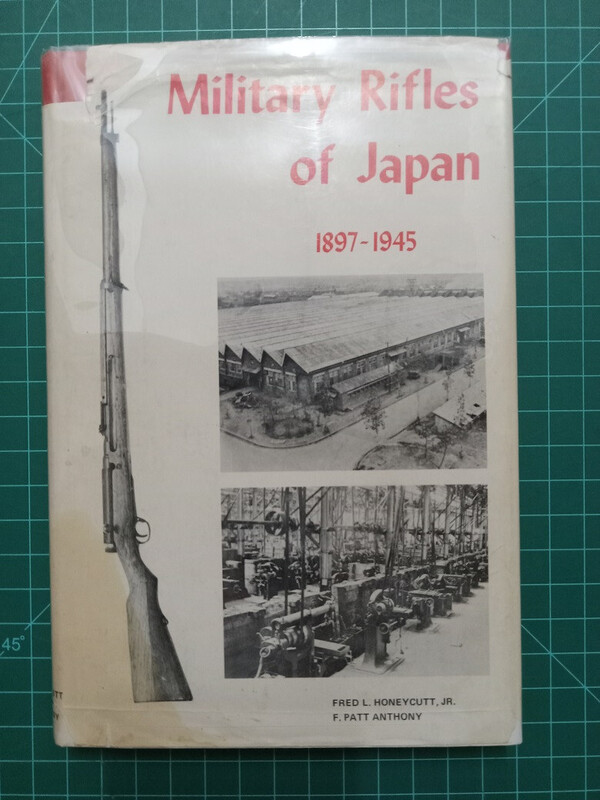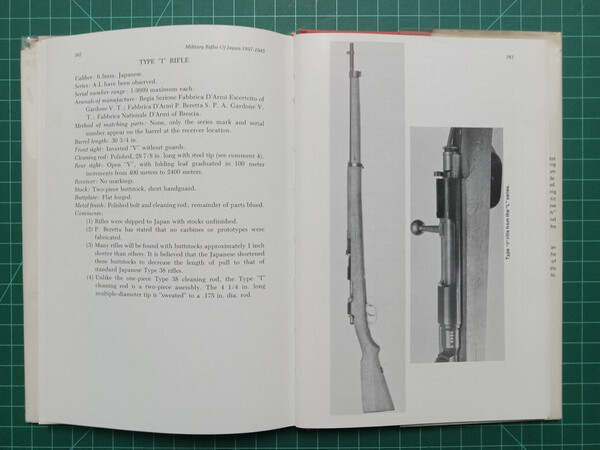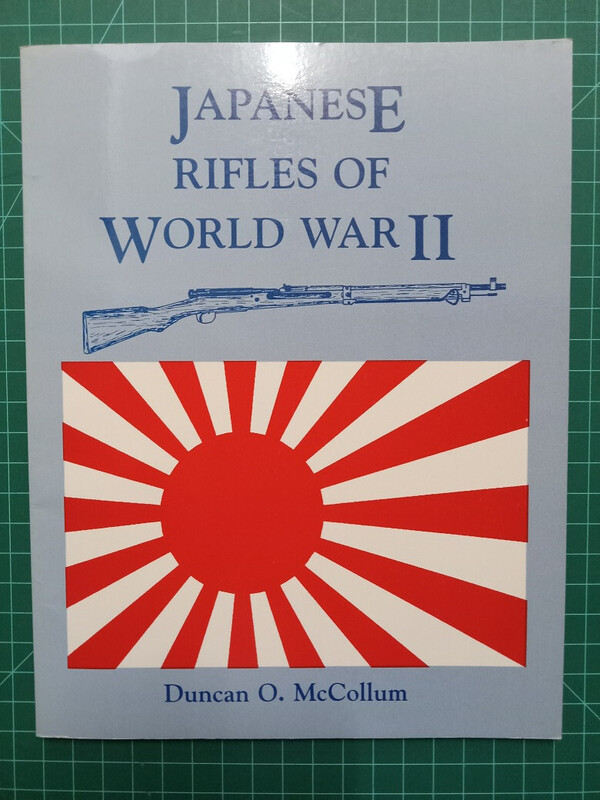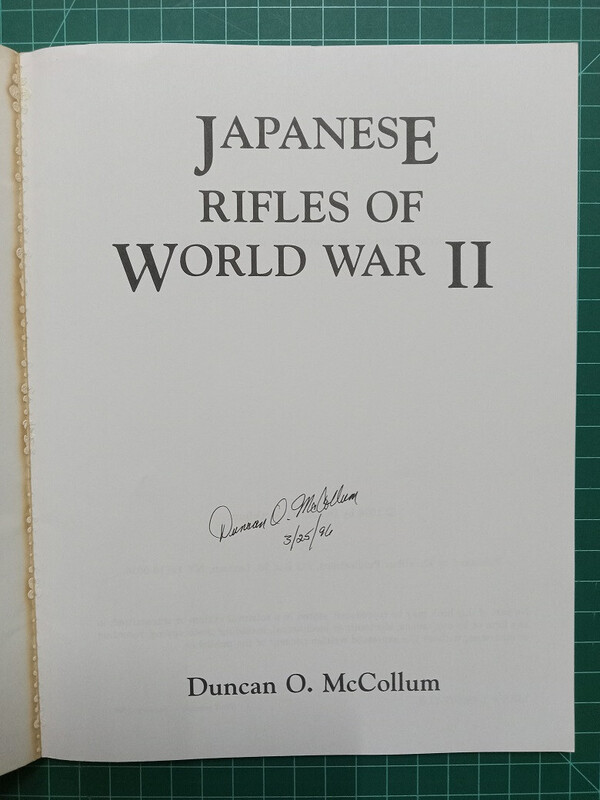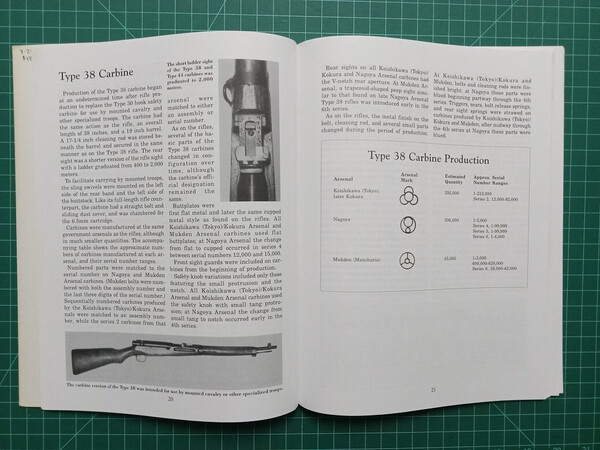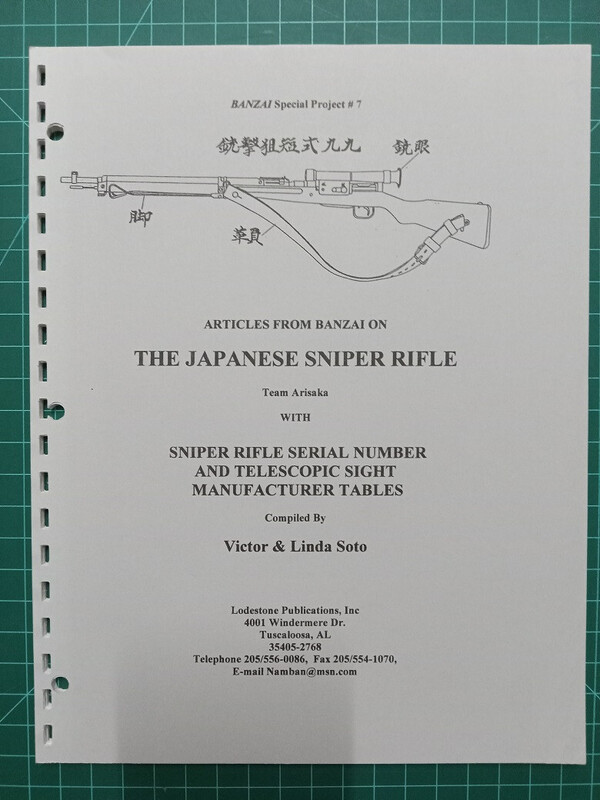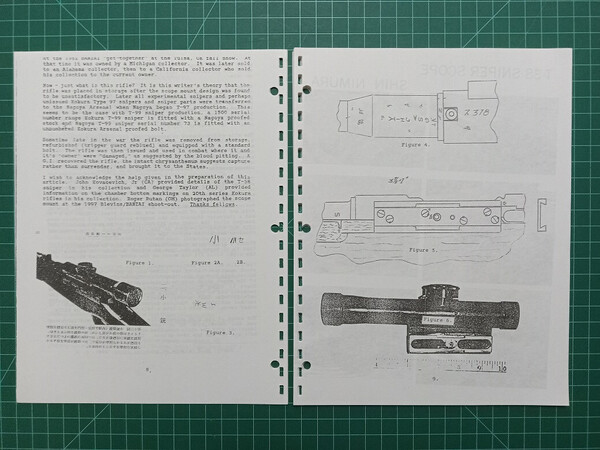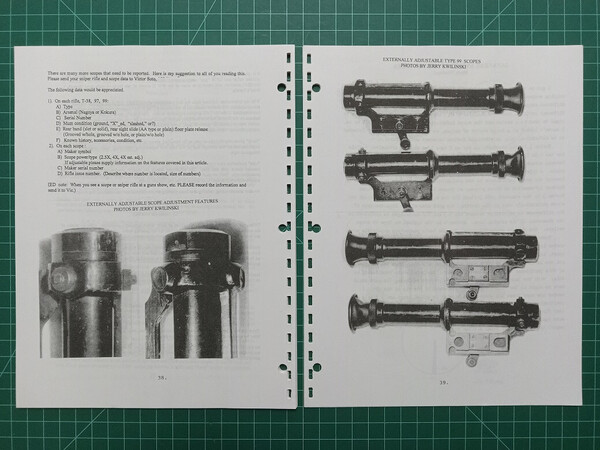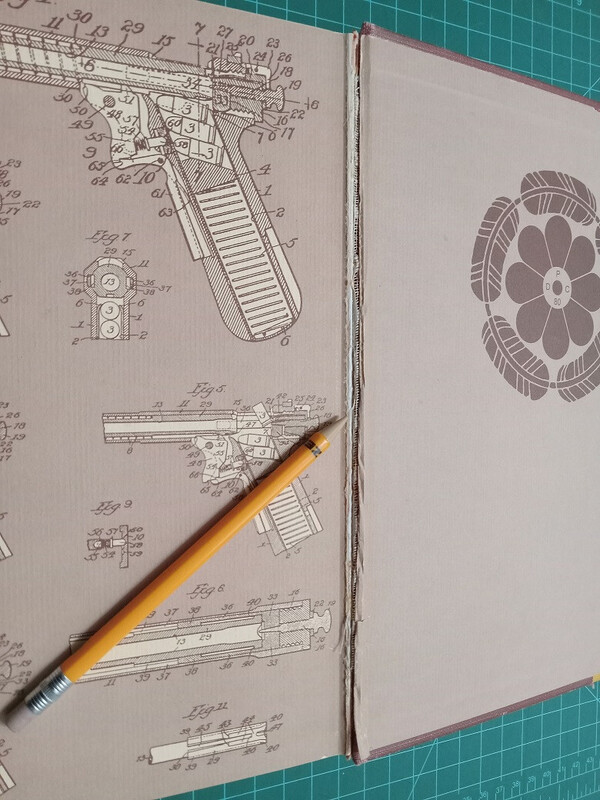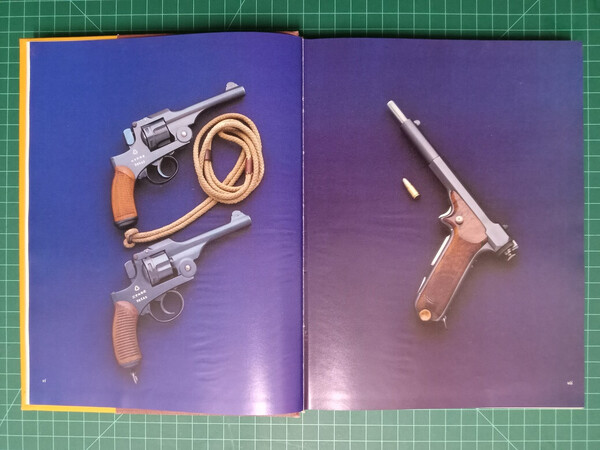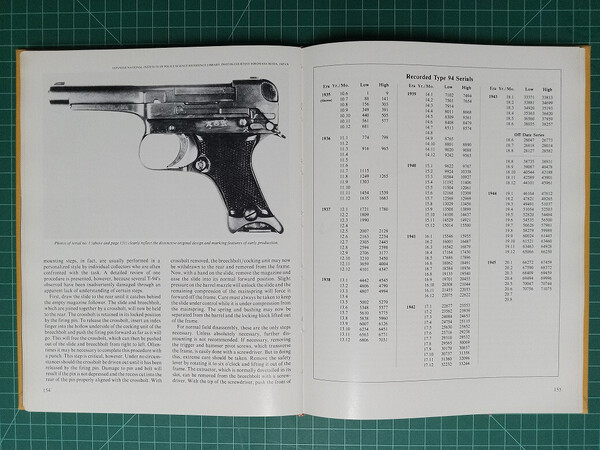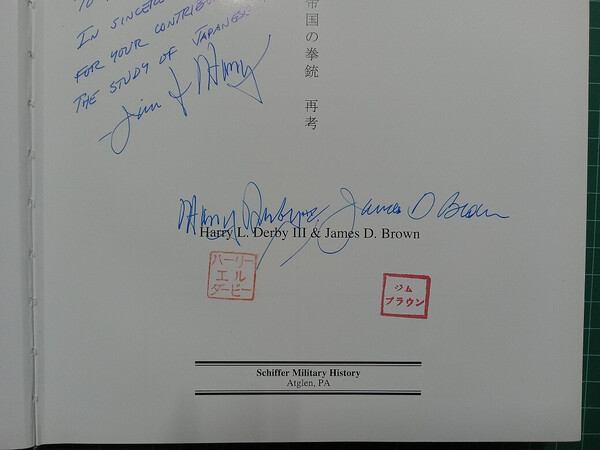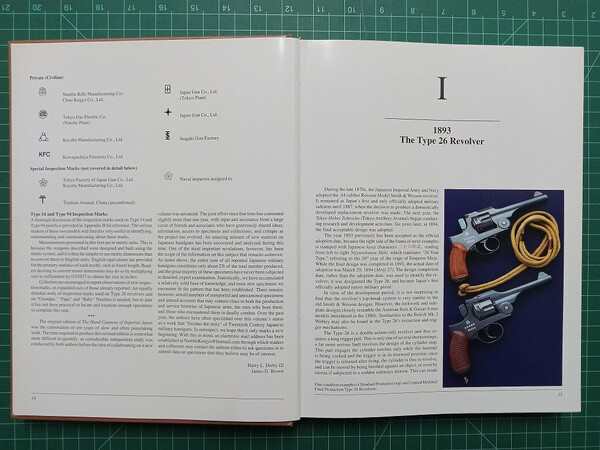-
Posts
2,137 -
Joined
-
Last visited
-
Days Won
11
Content Type
Profiles
Forums
Events
Store
Downloads
Gallery
Everything posted by Kiipu
-
Japanese Explosive Ordnance United States. Departments of the Army and the Air Force. Japanese Explosive Ordnance: Bombs, Bomb Fuzes, Land Mines, Grenades, Firing Devices, and Sabatage Devices. Army TM 9-1985-4. Air Force TO 39B-1A-11. March 1953. Beige softcover, 7.75 x 10.25 inches, 264 pages, grayscale illustrations. Weight 1 lb 3 oz, printed in USA. Condition is excellent except the cover has separated from the text. The glue hardened and became brittle. I have l left it as is but it can be repaired if desired. No writing or highlighting, no tears or missing pages. Not a reprint. A good complement to the grenade launcher book above. US$99 including shipping to US, overseas about $45.
-
Babich, Gregory A., and T. Keep. Imperial Japanese Grenade Rifles and Launchers. Dutch Harlow Publishing Company, 2004. Dust jacket, hardcover, 8.5 x 11 inches, 248 pages, color illustrations. Weight 3 lb 6 oz, printed in USA. The book covers the launchers & accessories (pouches, wrenches, etc.), grenades, and propelling cartridges. US$99 including shipping to US, overseas about $45.
-
Japanese Type 99 7.7mm Rifles All three books below for US$200. White, Doss H., Bill S. White, Frank A. Knapp, and George H. Taylor. The Japanese Type 99 Arisaka Short Rifle. Shoestring Publications, Ltd., 1985. Autographed by Doss White. First edition, first printing. Softcover, centerfold stapled, 8.5 x 10.5 inches, 80 pages. Copy 291 of 300. Weight: 0 lb 8 oz, printed in United States. The cover is detached from the top staple while the center sheet is loose. See pictures below. This was the forerunner of the Banzai Special Projects. Team Arisaka. Arisakas Tables: Type 99 and Type 30. Banzai Special Report 3. Lodestone Publication, 1999. Softcover, 8.5 x 11 inches, 46 pages, tables, no illustrations. The side-stapled binding converted to 3-ring binding. Weight 0 lb 5 oz, printed in USA. This is a spreadsheet showing the changes in component parts. The two publications above are sold together and the total cost for both is US$110 including shipping to US. Sasse, Douglas Allan. “A Historical Review of the Japanese Arisaka Type-99 Rifle with an Emphasis on the Quality of Manufacturing and Material in Relation to a Time Line of Major Allied Campaigns during 1939–1945.” Master’s thesis, California State University, Los Angeles, 1997. Softcover, 8.5 x 11 finches, 212 pages, printed on one side only, tables, drawings, black & white illustrations. The velo binding changed to 3-ring binding. Weight 2 lb 7 oz, printed in USA. US$120.
-
Japanese Rifles All three Japanese rifle books below for US$175 including shipping to US. Honeycutt, Fred L., Jr., and F. Patt Anthony. Military Rifles of Japan, 1897–1945. Honeycutt, 1977. First edition, used, dust jacket, red hardcover, 6.25 x 9.25 inches, 224 pages, black & white illustrations. Weight 1 lb 6 oz, printed in USA. Comes with the letter from the author that was included with the book. This was the first book devoted to just Japanese rifles. US$99. McCollum, Duncan O. Japanese Rifles of World War II. Excalibur Publications, 1996. Autographed by author. First edition, first printing. Softcover, 8.5 x 11 inches, 64 pages, black & white illustrations. Weight 0 lb 8 oz, printed in USA. A nice little primer on Japanese rifles. US$35. Team Arisaka, Victor Soto, and Linda Soto. Articles from Banzai on The Japanese Sniper Rifle with Sniper Rifle Serial Number and Telescopic Sight Manufacturer Tables. Banzai Special Project No. 7. Lodestone Publications, Inc., 2001. First edition, first printing. Softcover, unbound, 8.5 x 11 inches, 50 pages, tables, B&W illustrations. The comb binding converted to 3-ring binding. Weight 0 lb. 7 oz., printed in USA. US$60.
-
Japanese Handguns There are two editions of the Derby & Brown handgun book, the original edition from 1981 and a later revised edition from 2003. Every guntō collector should have at least one of these two in the reference library. I find the older edition to be more enjoyable to read. Price for both books is US$199 including shipping to the US. Derby, Harry. The Hand Cannons of Imperial Japan. Charlotte, N.C.: Derby Publishing Company, 1981. Stamped and autographed by author. Hardcover, 8.5 x 11 inches, 284 pages, drawings, tables, black & white illustrations with 8-page color insert. The back endpaper/flysheet has completely split at the fold and is only held together by the fabric backing. The easiest fix is to tape it back together. As the book is damaged, it is no longer a collectors book but merely a reading copy. US$50 including shipping to US. Derby, Harry L., III, and James D. Brown. Japanese Military Cartridge Handguns, 1893–1945. Schiffer Military History, 2003. Stamped & autographed by both authors. Dust jacket, hardcover, 8.5 x 11 inches, 384 pages, color illustrations. Weight 5 lb 0 oz, printed in China. The book is currently out of print and the senior author is deceased. Selling a contributor's copy of the Derby & Brown's book. This is the copy that was given to those that significantly helped with the revised edition. For this reason, it was signed and stamped [inkan 印鑑] by both authors. US$160.
-

Kanekuni Swordsmiths of Seki Ogawa & Tokyo Kato Families
Kiipu replied to mecox's topic in Military Swords of Japan
Interesting comment about the second brother. (一) 初代「加藤良明」 -
Kabutogane The logo on the right is for Tōkyō 1st Army Arsenal while the logo on the left is for the sword shop. 東 = Tōkyō 1st Army Arsenal Supervisory Section 東京第一陸軍造兵廠監督課.
-

Kanekuni Swordsmiths of Seki Ogawa & Tokyo Kato Families
Kiipu replied to mecox's topic in Military Swords of Japan
As an aside, Katō Jusaburō(?) 加藤・壽三郎 of Meguro-ku 目黒区, Tōkyō 東京, was using the mei of Masamitsu 正盛 in 1937. He could make five blades per month and had 2 apprentices. 壽 = 寿 -

ID Help Please (Type 98, Shin Gunto, Officer's Sword?)
Kiipu replied to EryrWen's topic in Military Swords of Japan
Name of swordsmith: 吉道 Yoshimichi. Date made: 昭和十七年三月 1942 March. -
To clarify, my comments above were about swords made in the early Shōwa 昭和 (1926-1945) era and not older swords repurposed for military use. On this forum, we tend to think more in terms of traditional Japanese sword craftsmanship versus the economical mass production of swords. If one keeps in mind the resurgence of interest in swords in the 1930s and 1940s, one can better understand the need for parts made in quantity (and not quality). I think one is either looking at high end blades and parts made by craftsmen for the wealthy or swords made on an assembly line for the working class with a modest income. In my opinion, these tsuba that are illustrated above and in the links are intended for the working class. Seki stamped Kanemori in handachi mounts on Yahoo Inherited Sword, looking for help Identifying maker.
-
No, gunzoku are civilians working for the military. They wore uniforms but with different rank insignia. Gunzoku Photograph
-
And all those swords depicted are actually civilian samurai-style swords pressed into military service. I would not venture so far as to say these crossguards are for gunzoku use only.
-
I have never seen any Japanese documentation that specified a gunzoku 軍属 pattern crossguard. I just assumed gunzoku used whatever crossguard that was readily available and economical at the sword fittings shops.
-
I think this is an early Shōwa 昭和 (1926-1945) era crossguard for civilian samurai-style swords. Many of which got drafted later on for the war effort.
-
The unidentified company logo on the crossguard consists of the kanji character 内 over 山. It could belong to a sword shop or a uniform store.
-
A more recent reproduction which is better made than some of the older Chinese reproductions. They caused a bit of confusion when first seen via photographs. Nco Shin Gunto - Real Or Rotter?
-
Next on your bucket list will be a leather sword knot, either real or a reproduction. Gotta have one to complete the rig. And once you are settled in and ready to dive into the deep end of the pool, take a look at the following WRF thread. Short Development History of Type 95 Gunto
-
Several different kinds of mekugi were used over time on the Type 95. What you need for your Type 95 is a steel one. Contact Don Schlickman and see if he has a reproduction available for sale. This is the same Don that Conway mentions above.
-
Rob, nothing wrong with your sword. The 115,000 to 117,000 serial number range is intermixed with both Kokura and Nagoya manufactured swords. I have a Nagoya, serial number 名117950, recorded from a 2020 eBay sale. This sword is pretty close to the one you own.
-
Hi Rob, welcome to the forum. As already stated, your sword is a Type 95 Military Sword. Below is a link to some basic information about them. IJA Type 95 NCO Sword Info
-

ARMY MOUNT WAKASASHI- SHIN SHINTO PERIOD ?
Kiipu replied to Dogditcher's topic in Military Swords of Japan
Spartancrest might be able to help with the tsuba (crossguard) identification. -

Is it real or fake - Type 98 WW2 officer sword
Kiipu replied to kogel's topic in Military Swords of Japan
名 昭和十九年一月 [Nagoya Arsenal inspection mark] 1944 January. ☆ 関住兼友作 [Star stamp] Seki-jū Kanetomo saku. -
Another mystery swordsmith. Unable to find a second sword made by him so far. Because it has no date, that rules it out as being made under army contract.
-
Ran across this naval handle that has the same white color in one set of pictures and then a brown color in another set of pictures. I wonder if this could be this case with this sword? Shodai Kawashima Tadayoshi Gendaito Hozon - Kai Gunto for review
-
Handle looks to have been soaked in bleach.





